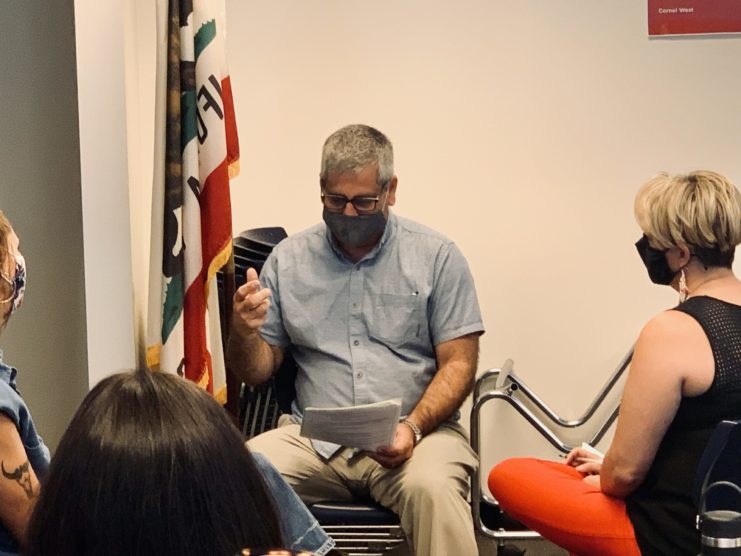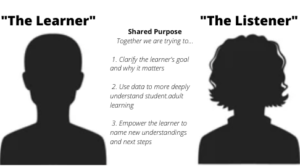
Public Learning is a Two Way Street: “I was a Learner, Too”
Public Learning is not, however, a one way street. It depends on a dialogue between the public learner and their colleagues.

Frequently, those not as familiar with our work ask us, why Public Learning? Why does this collaborative routine play a role in all of your learning sessions? How does Public Learning lead to equitable change? The answer is simple: Public Learning makes our thinking visible to ourselves and others. When we practice Public Learning, our mental models become clearer to us. We invite others into our messy thinking so that they can help us see what we can’t see on our own. We begin to connect our behaviors and responses to underlying thoughts and mindsets. And when learning aloud becomes routine, systems shift to honestly and vulnerably explore the complexities that emerge when trying to support students’ needs, particularly those on the margin.
Alameda Unified School District has partnered with Lead by Learning this year to create the conditions for adult learning and collaboration at all levels of their system. During their bi-monthly district professional development, teachers, coaches, instructional leads, administrators, and district leaders engage in the practice of Public Learning together to grapple with problems of practice and take steps forward together.
During a recent session, an instructional coach thought aloud as a Public Learner in a fishbowl. She was joined by two supportive listeners:another coach and Dr. Vernon Walton, Jr., EdD the Director of Secondary Education. As the instructional coach described a coaching dilemma she was experiencing, Dr. Walton listened intently and reviewed her data as a supportive listener. Then, he entered the conversation as a partner, offering probing questions and thoughts that might help her unpack current reality, deepen her thinking, and identify possible paths forward.
After the conversation, Vernon and the other coach were invited to reflect on their experience with Public Learning, specifically how it felt to be a listener for their colleague. At this moment, Vernon courageously shared, “I was a learner too.” Principals, coaches, and teachers watched their district leader take a learning stance just like they were being asked. They saw that Public Learning wasn’t something being done to them; it was being practiced at all levels of their system. This Public Learning moment supported site educators to see the district as an ally–a thought partner who cared about their messy thinking because the district could see a throughline from Public Learning to equity-seeking action.
“I was a learner too.” This simple phrase is what Public Learning is all about: making learning valuable and visible across all levels of the system.
Lead by Learning followed up with Vernon to hear more about his experience as a listener:
Tell us more about how it felt to be in a public learning conversation?
“I was nervous because this conversation was in front of site administrators and their ILT’s. Being new to the district I wanted to appear thoughtful and competent.”
You mentioned that you also felt like a learner, what did you mean by that?
“When I heard my colleagues respond during the protocol, I was able to clarify my own thinking and get a better understanding about the question my colleague was trying to answer. I was learning from others’ responses during the discourse.”
To you, why Public Learning? How is it supporting your district to create the conditions for adult learning and collaboration?
“I think administrators are expected to have all the answers and this creates silos within the hierarchical nature of public education. By admitting that one does not have all the answers and can learn from others through Public Learning, the hierarchy in schools is broken down and collaboration and distributed leadership is fostered.”
What would you like other district leaders to know?
“Leadership becomes much easier when there is a culture of public learning. Adult learning cultures promote distributed leadership and school leaders also do not have to hold all the answers.”
At Lead by Learning, we are incredibly grateful to all our partner educators who are placing learning at the heart of teaching and leading at all levels of their system.
